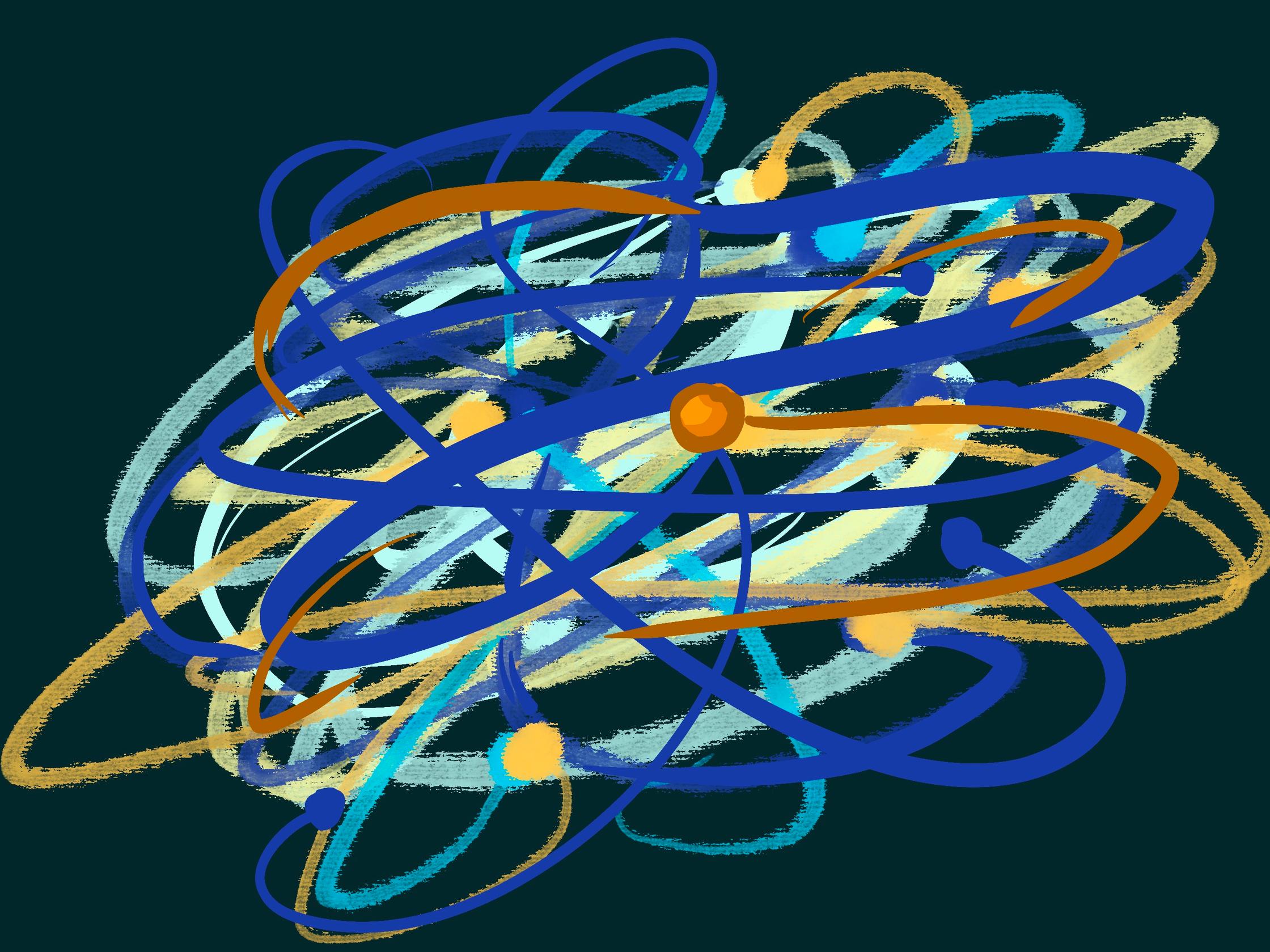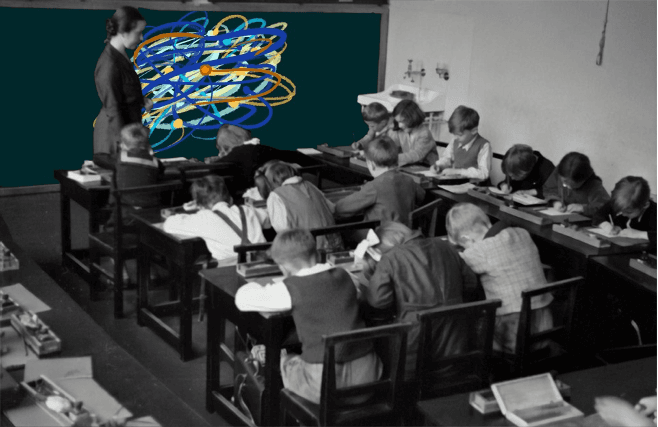Maybe you have heard about it before. Maybe your computer-geek friend told you about it. The quantum computer is coming. A futuristic looking colossus that, if you believe the promises, is going to change our entire lives.
Promises about new technologies and new groundbreaking gadgets always give me shivers. Not only do I rarely believe in them, I also don’t get where people find the need for developing new things. Things are fine as they are right? But now I had to dive into this. For my internship at Waag I dove into this new technology. A technology that challenges me to forget everything I thought I knew and makes me look at the world in a different way. Is it black and white, as I was taught? Or is it a bit more nuanced?
What I find strange about the promises being made about this new "supercomputer" is that it is actually all hypothetical. We don't know at all what will happen and what it will look like. I will try to nuance the promises and explain them to you in my own way. That starts with the 'de-blurring' of the subject. With a fancy word 'demystifying'. I will go into more detail on this in the next blog. I'm still in this phase myself. What does this new technology mean and what can we do with it? I think demystifying the technology also ensures that you can later actively think along and fantasize about this technology. With the demystifying, I'll go into about how the computer works and why it's a computer on a spectrum.
In connection with my internship and writing this blog, I spoke to several smart people. PhD scientists who know a lot more than I do about this topic. One of those people is Eline de Jong. Together with the WRR (scientific council for government policy), she conducted research on the impact of new system technologies on society. A framework emerged from this, a series of tasks as Eline de Jong calls them. She has applied this framework again to the developments of quantum. I will use these tasks from the framework in the following blogs. Mostly because I hope to make it a bit more understandable for you. The framework has already given me much more guidance when trying to understand this technology.
De-blurring
Let’s start at the beginning. De Jong's framework starts with demystification. Or de-blurring as I called it. Marleen Stikker founder and director of Waag Futurelab and author of the book “Het internet is stuk. Maar we kunnen het repareren” helped me with this. When I asked her how I could explain the whole quantum computer to you, she came up with an interesting metaphor. She talked about how James Bridle, an artist and writer, had talked about different kinds of intelligences. In general, people have quite a one-sided view on intelligence. We determine what intelligence is and we test it on each other and on animals. And if someone doesn't do that test well, then that person is not intelligent. Bridle said that this way of looking at intelligence is a bit naive. Not that intelligent.
Take artificial intelligence or AI for example. This AI or a classical computer calculates with ones and zeros. We think it's intelligent because it's fast and can do things that a human can't. But the real world and almost all things in nature do not consist of values of ones and zeros. And that is also the essence of a quantum computer. A quantum computer computes the same way natures computes. Warning: don't ask a computer scientist what a quantum computer is. He or she will probably burst into terms that no one really understands and make it much more complicated than necessary. Of course I say this with all due respect for their expertise, but you don't have to know everything about the computer. I'm going to make an attempt to explain the essence to you. At least the part that is important right now.
Quantum is the branch of physics that looks at moving particles at the atomic level. The smallest of the smallest. If you freeze atoms to -273° Celsius, they stand still and are in superposition. This just means that the values of a quantum computer lie somewhere between zero and one. This computer therefore works on a spectrum. It is no longer one or zero or black or white, as with a classic computer that we know today, but it is one or zero or something in between, black or white or gray. I'm not going to tell you why this is and how it works, partly because you don't need to know and partly because I don't know it myself and therefore can't explain it. What is nice to know is that a quantum computer can calculate much faster due to this characteristic than a 'normal' computer as we know it now. Suppose you want to calculate the fastest route to school a normal computer first calculates every single route and then determines which is the fastest. A quantum computer immediately knows which route is the fastest.
Another important characteristic of a quantum computer is 'entanglement'. This property can also be understood if we look at nature. Different cultures believe that everything in nature is connected. That when you pull a leaf from a tree, a plant 5 kilometers away knows and feels it. That all plants and animals communicate with each other and are 'entangled' with each other. A quantum computer has that too. The qubits I wrote about earlier are 'entangled' in a way. Wherever they are in the world, if something happens to one half, the other half will feel it too. Actually, quite romantic.
Demystifying also includes thinking about what a new technology can do for you. Unfortunately, I can't delight you with actual applications yet, but I can ask you a question. Suppose there is a computer that works as I have just described, what could that mean for you? I would like to give you another example. An example of a technology that I don't understand myself. Electricity. When I try to understand how voltage runs through a cable and then into my charger and then charge the battery of my phone, my brain gives up. Fortunately, I don't have to understand how it works to know what I can do with it. The same goes for the quantum computer. In addition, electricity does not mean the same for everyone. For me, electricity is about chargers and my electric toothbrush. For a hairdresser it's about the trimmer, for a cook it's about induction and a refrigerator. The same technology therefore has different applications for everyone in his or her practice. This also applies to the quantum computer. We are still very early in the development of the quantum computer, and yet I want to give you a little advice, which I also received from Marleen Stikker. Find out how the quantum computer is relevant to you and find someone who might know more about it and can help you with it.
Then I want to conclude with a final invitation. I have mentioned several times in this blog how difficult and complicated this technology is. And in a way it is. And you don't necessarily have to understand the technology either. Still, I think it's important to mention that you too can dive into this and that you really don't have to be a science-pro to understand what it's all about and what the applications could mean for you. You know that story about the guy who started making his own toaster? Another technology that I do not understand at first, but also a technology that is easy to understand if you dive into it.
In the next blog I will discuss contextualizing. As I wrote, the applications are still vague and unclear. I'll try to make this a little less vague. Hopefully this will also make it clearer what the technology can mean for you. In the meantime, would you like to learn more about Quantum Computers? Then have a look at Shohini Ghose's or Ilya Khan’s TED talks. Are you more practical? Then download the tiqtaqtoe app. This is tic-tac-toe but with quantum properties. Or play a game of Quantum Chess


